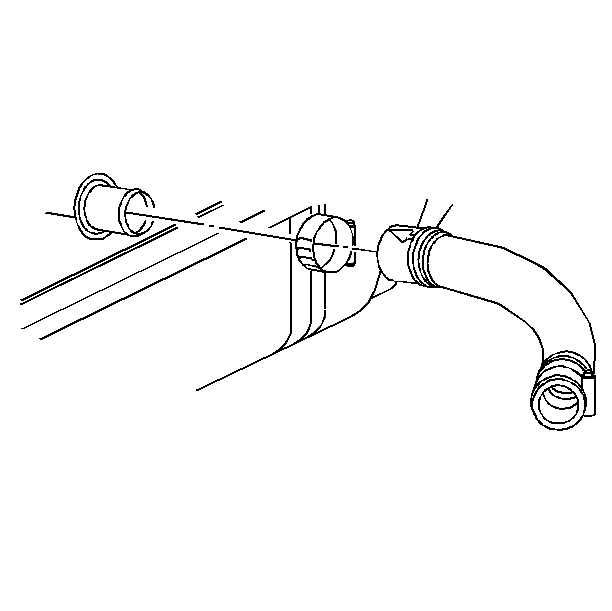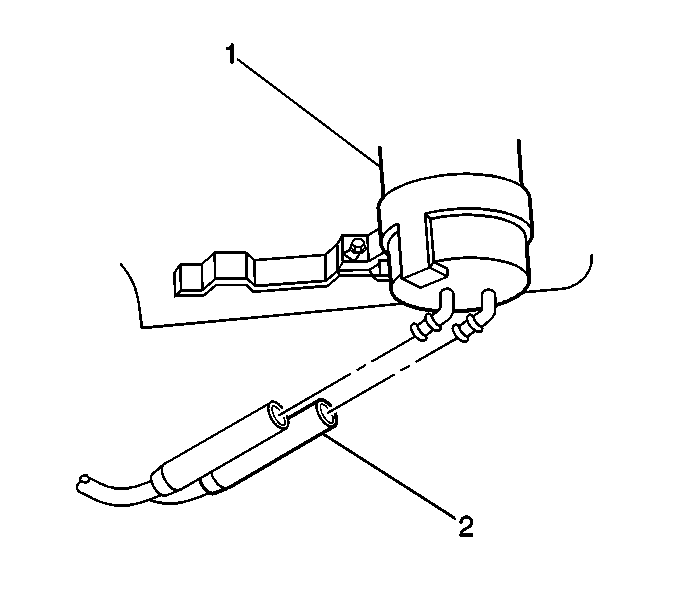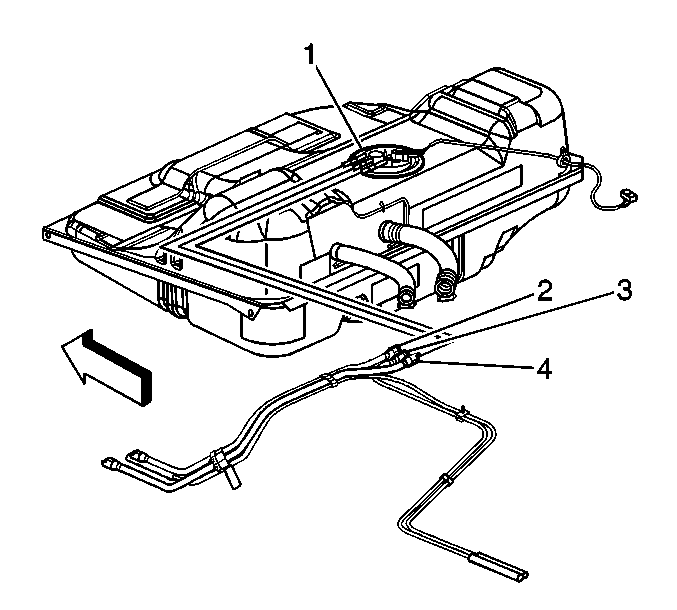Removal Procedure
Caution: In order to reduce the risk of fire and personal injury observe the
following items:
• Replace all nylon fuel pipes that are nicked, scratched or damaged
during installation, do not attempt to repair the sections of the nylon fuel
pipes • Do not hammer directly on the fuel harness body clips when installing
new fuel pipes. Damage to the nylon pipes may result in a fuel leak. • Always cover nylon vapor pipes with a wet towel before using a
torch near them. Also, never expose the vehicle to temperatures higher than
115°C (239°F) for more than one hour, or more than 90°C (194°F)
for any extended period. • Apply a few drops of clean engine oil to the male pipe ends before
connecting fuel pipe fittings. This will ensure proper reconnection and prevent
a possible fuel leak. (During normal operation, the O-rings located in the
female connector will swell and may prevent proper reconnection if not lubricated.)
Caution: Always wear safety goggles when working with fuel in order to protect the eyes from fuel splash.
Notice: Cap the fittings and plug the holes when servicing the fuel system in order to prevent dirt and other contaminants from entering the open pipes and passages.
Important: Always maintain cleanliness when servicing fuel system components.
- Relieve the fuel system fuel pressure. Refer to Fuel Pressure Relief .
- Drain the fuel tank. Refer to Fuel Tank Draining .
- Raise the vehicle. Refer to Lifting and Jacking the Vehicle in General Information.
- Loosen the fuel tank filler hose clamp (1) at the fuel tank (3).
- Disconnect the fuel tank filler hose from the fuel tank.
- Disconnect the fuel tank fuel pipes from the chassis fuel return pipe and in-line fuel filter. Refer to Metal Collar Quick Connect Fitting Service .
- Disconnect the fuel tank purge pipe from the chassis purge pipe.
- Disconnect the EVAP hoses/pipes (2) from the EVAP canister (1).
- Release the EVAP pipes retainer from the underbody bar.
- Remove the rubber exhaust pipe hangers in order to allow the exhaust system to drop slightly.
- With the aid of an assistant, support the fuel tank, and remove the fuel tank strap attaching bolts.
- Remove the fuel tank from the vehicle and place the fuel tank in a suitable work area.
- If the fuel tank is not being replaced, refer to the fuel tank installation procedure.
- Disconnect the fuel feed and return pipes (2 and 4) from the fuel sender assembly (1).
- Disconnect the EVAP pipe (3) from the fuel sender assembly (1).
- Remove the fuel tank fuel bundle.
- Remove the insulator pads from the fuel tank. Note the location of the insulator pads for installation.







Installation Procedure
- Install the insulator pads on the fuel tank.
- Connect the fuel feed and return pipes (2 and 4) to the fuel sender assembly (1).
- Connect the EVAP pipe (3) to the fuel sender assembly (1).
- With the aid of an assistant, position and support the fuel tank.
- Install the fuel tank retaining strap attaching bolts (2).
- Install the rubber exhaust pipe hangers in order to aline the exhaust system.
- Press the EVAP pipes retainer into the underbody bar.
- Connect the EVAP hoses/pipes (2) at the EVAP canister (1).
- Connect the fuel tank fuel pipes to the chassis fuel return pipe and in-line fuel filter. Refer to Metal Collar Quick Connect Fitting Service .
- Connect the fuel tank purge pipe to the chassis purge pipe.
- Connect the fuel tank filler hose to the fuel tank.
- Inspect and make sure filler hose (4) is fully seated on fuel tank port (2).
- Make sure clamp (1) is properly located on tank port between the bead (5) and tank (3).
- Inspect the fuel and EVAP pipes making sure they were not kinked or damaged during removal and installation.
- Lower the vehicle.
- Install the fuel sender assembly. Refer to Fuel Sender Assembly Replacement .
- Add fuel and install the fuel tank filler pipe cap.
- Connect the negative battery cable. Refer to Battery Negative Cable Disconnection and Connection in Engine Electrical.
- Inspect for fuel leaks.



Notice: Tighten the strap fasteners by steps, alternating between the fasteners, until the specified torque is reached. A failure to tighten the strap fasteners as specified will cause the bottom of the tank to flex upward. This will result in the fuel gauge indicating that there is fuel remaining in the tank when the tank is empty.
Tighten
Tighten the front fuel tank retaining strap bolts (2) to 47 N·m
(35 lb ft).




Tighten
Tighten the fuel tank filler pipe hose clamp to 2.5 N·m
(22 lb in).
| 19.1. | Turn ON the ignition for 2 seconds. |
| 19.2. | Turn OFF the ignition for 10 seconds. |
| 19.3. | Turn ON the ignition. |
| 19.4. | Inspect for fuel leaks. |
